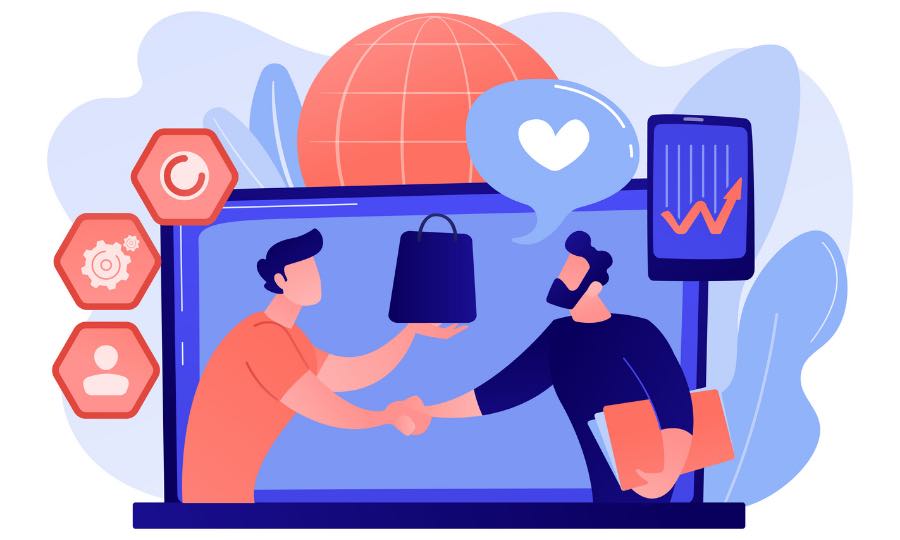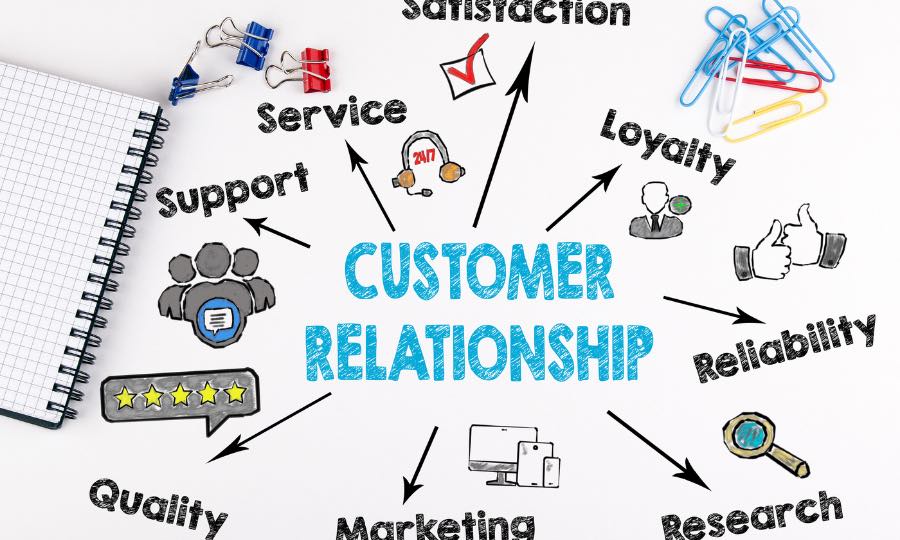The Do’s And Don’ts Of Customer Relationship Management
The present reality is that most ecommerce platforms have already acquired global reach. This, coupled with the increasingly popular trend of digital transformation among businesses and large enterprises, is forcing businesses to rethink the way they’ve been doing their lead management and sales pipeline funnel systems. For global multinational corporations, they’ve been using lead and sales management software systems for quite some time now.
In the past several years, even small businesses and enterprises have caught on to the empowering technology of using CRM software systems. Many online stores are realizing the potential of their stores to reach consumers in every corner of the world. This has resulted in the explosion of CRM software systems for large and small businesses alike. Thus, it pays to know what does CRM stand for and its many applications in business operations.

Here are some of the dos and don’ts of customer relationship management:
Table of Contents
Dos
1. Aspire To Build Relationships
One of the most important things to keep in mind about customer relationship management (CRM) is that you should aspire to build relationships with your clients and customers. Make it your goal to establish, nurture, and sustain healthy business or working relationships with your clients and customers.
Instead of viewing transactions with clients or customers as one-time purchases or transactions with strangers, companies should consider them as potential long-term clients or regular clients. Whether they’re people you met in face-to-face prospecting or through social media inquiries, they’re all potential lifetime clients and customers. This is particularly true for those in the services, and wholesale or bulk selling sectors, but it’s also applicable for those in the retail sector.
Using a CRM software system should enhance your existing efforts to create and nurture business relationships with your clients. You should view the CRM software as a tool to synergize and amplify the connections that you already have with your clients and those in your network.
2. Know As Much As You Can About Your Clients
Another thing you should do for effective customer relationship management is strive to know as much as you possibly can about your clients or customers. The more you learn about them, the more you’d be able to understand their needs and help them identify the solutions they need.
This is particularly true for those in the services, contracting, and bulk supply sectors, but it can also be applied by those in the retail sector. Your clients are operating within specific industry contexts to meet their own business goals and revenue objectives. To do this, they have multiple requirements, some of which your company might be in a position to provide.
You should use a CRM software to help you know more about your clients and gain further in-depth understanding of your customers’ needs. Most CRM systems have the capability to run data analytics and generate reports. You can then use such pieces of information and analyses to forecast your clients’ supply requirements. You can also time your upselling and cross-selling proposals with their purchasing behavior patterns.
3. Your Goal Should Be To Add Value
Make it your goal to add value to your clients’ or customers’ businesses. When you already understand thir context and circumstances, try to use this understanding to identify entry points. You should identify the best possible ways for you to deploy your resources and capabilities to add value to your clients’ businesses.
This isn’t just applicable to bulk selling, or those in the services and contracting sectors. Even those in the retail sectors can do this just by asking a customer where they intend to use a certain merchandise and see if you might be able to recommend alternative solutions or supplies.
You can make use of your CRM system to plan your courses of action and recommendations to add value to your clients or customers. If you’re a bulk supplier, for instance, you can study your clients’ purchasing patterns. You might be able to identify opportunities to help them schedule purchases and deliveries.
4. Be Honest About Your Commitments
You should always try to meet your commitments to your clients within the timelines that you’ve both agreed upon. Meeting your commitments, and delivering the products or supplies that you pledged within the agreed timelines indicate to your clients that your company can be trusted and relied upon.
But, it can be expected that there are times when you’d find yourself in a situation where it’d be impossible to meet your obligations and commitments. If this does happen, you should be forthcoming with your client and admit it outright that you won’t be able to meet the deadline or timeline agreed upon. This would at least enable them to adjust their operations with the changed circumstances.
Don’ts
1. Don’t Use CRM For The Sake Of Metrics
When you start implementing your CRM software system, don’t deploy and use it in such a way that you’re only doing it for the sake of meeting your metrics requirements. It’s important to meet your metric requirements, especially if these are based on carefully laid out company goals and business objectives.
But, you should keep in mind that all these metrics are just quantitative indicators of the different aspects of your relationship with your clients and customers. Purchase orders, for instance, indicate the dollar amounts of what your clients bought from you, yet they also contain valuable information on what they thought they needed from you and when they said they needed it. If you only looked at the metrics, however, you’ll only see how much money was paid to your company or revenues.
However, if you go deeper than the metrics, you’ll gain valuable insights into the dynamics of your business relationship with your clients. With the use of CRM software systems, you can further study the data analytics of your various engagements, transactions, and other interactions with a particular client. For instance, you can use that information to find out whether you can supply more high-value products to your client even if you have to give longer credit terms or discounts.
2. Don’t Use CRM As Merely Reporting Software
Another thing that you shouldn’t do is that you shouldn’t use your CRM system merely as monitoring or reporting software. Sure, monitoring of lead conversions, sales revenues, and sales performance is a critical function of a CRM system. But, those things shouldn’t stop merely by generating nice-looking reports for the company’s executives.
Your company shouldn’t use CRM system just for the sake of collecting sales information and generating reports. Instead, you can view the system as a technological tool that enables you to understand the dynamics and organicity of your business network, and that it isn’t a static entity. It’s made up of connections to prospects and clients, as well as stronger links to regular customers and long-term clients.
If you only view your business network as a static unmoving list of prospects and a pipeline of contacts, you won’t be able to see that much of your business growth depends on how you manage the dynamics of your connections and engagements, transactions, and interactions.
3. Don’t Overcommit
It’s quite common for sellers and suppliers to somehow agree to almost everything that the prospective client or customer asks for during the presentation stage, and, sometimes, even after the contract has already been awarded or the purchase order sent out to the seller. Some companies are understandably quite eager to please their clients and customers for fear of losing the sale.
This doesn’t mean, however, that you have to agree to just about anything that a potential or current client is going to demand from your company. Understand the value of overcommitting to any client. This would set proper expectations in your client about your company’s capabilities and resources. Ideally, of course, you should try to meet client expectations, but this doesn’t mean that you should promise what you’re not capable of doing.
4. Don’t Stop Communicating
You shouldn’t stop communicating with a client or customer after you’ve already made a sale. This is a common pitfall among businesses. They exert all efforts to close the deal from lead magnet, initial conversation, product presentations, proposal, up to approval and the much-awaited purchase order. But, after they’ve delivered the product and the customer has paid, it’s not uncommon for some sellers to vanish into thin air.
Don’t stop communicating just because you’ve already closed a sale and the client has already paid. Make the most of this successful sale by marking it as the start of a mutually rewarding business relationship. Now that the customer has bought something, it’s not unlikely that they might buy something again in the near future. Instead of pausing all communications, try to reach out to the client or customer a few weeks or months after they’ve tried out your product.
It doesn’t mean that you should be constantly messaging the client or hovering over the customer’s schedule of purchases. It just means you have to reach out every now and then to find out if they might need something that you’d be able to provide.
Conclusion
CRM software systems have found multiple applications in almost all aspects of business operations, such as finance, sales, marketing, logistics, and many others. Even small businesses have realized their need for CRM systems, given the potentially global reach of their ecommerce sites and online stores.


